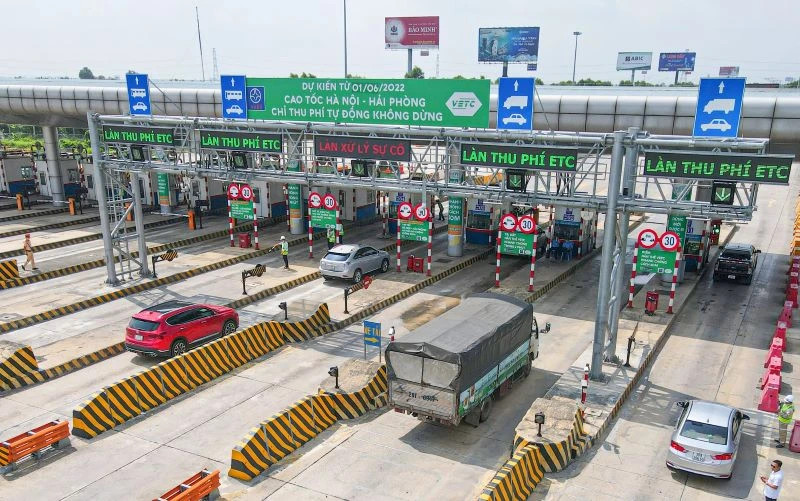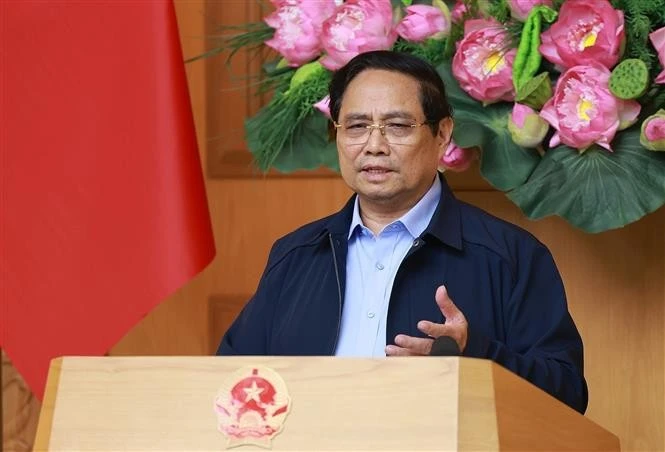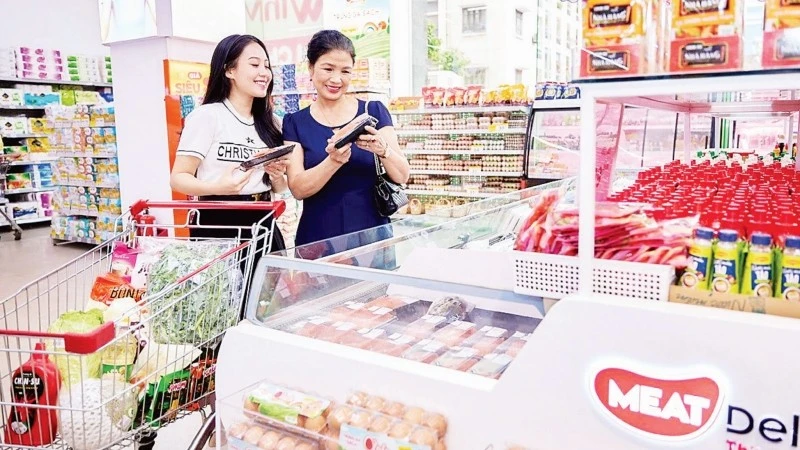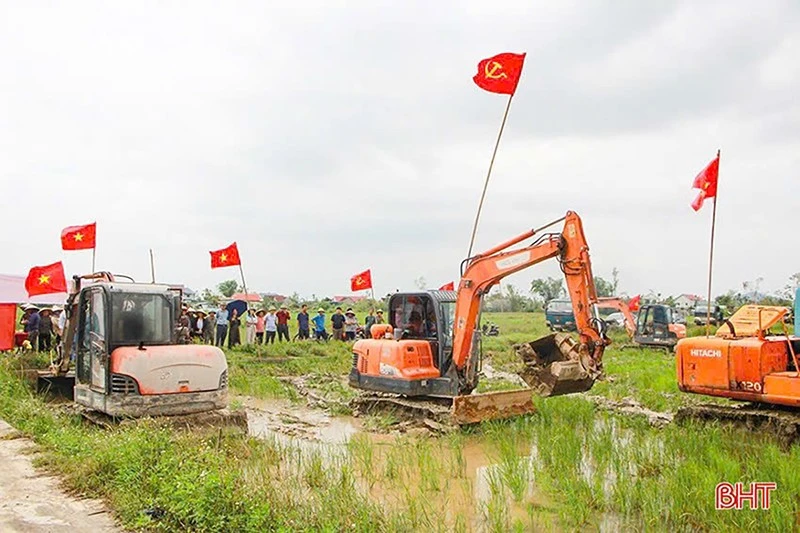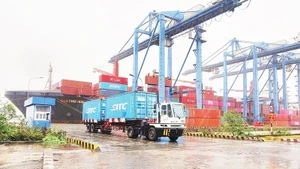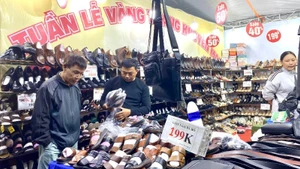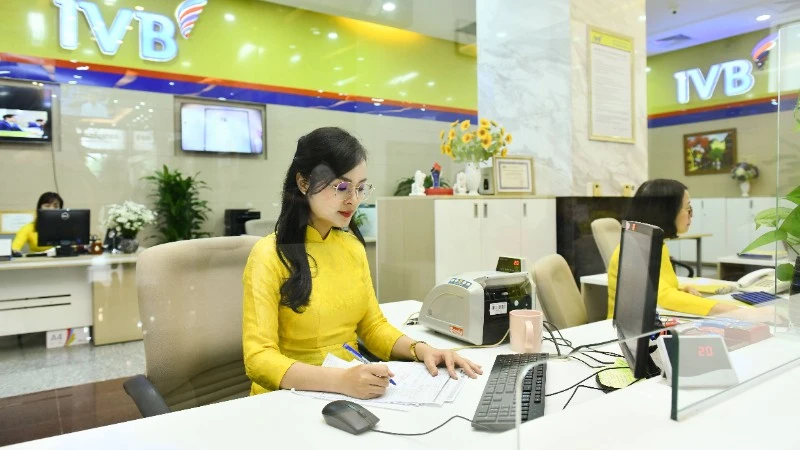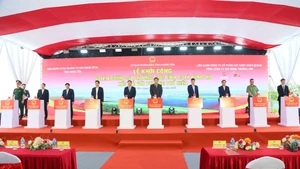In the coming time, when thousands of kilometres of highways are put into operation, it is a "ripe" opportunity for Vietnam to invest in a modern, synchronous ITS system to ensure synchronous connection in management, exploitation and operation.
Nhan Dan Newspaper reporters interviewed Lam Van Hoang, Director of the Vietnam Expressway Authority under the Ministry of Transport, to talk about this issue.
Q: Could you generally evaluate the benefits of applying ITS to the transport sector?
A: Intelligent Transport System (ITS) is a system that applies science and technology, including devices such as sensors, electronics, information technology, and telecommunications to control, operate, and manage the most optimal transportation infrastructure systems, improve traffic capacity, minimise traffic congestion and accidents, reduce fuel consumption, etc., thereby helping transport activities more effective.
Basically, ITS uses advances in information and telecommunications technology to link people, traffic systems, and vehicles on the road into an information-telecommunications network, thus ensuring that management, operation, exploitation and circulation are handled in the most optimal manner on expressways. The highest goal of the ITS system is to automate traffic management.
 |
| The Hanoi-Hai Phong Expressway Operation Centre. |
In addition, ITS also has the function of managing traffic information; traffic infrastructure management; traffic electronic payment management; traffic management and control; and management and automatic detection of traffic incidents and prompt response to incidents on highways, thus helping to prevent and raise awareness of traffic participants, contributing to building a safe, civilised, modern, and developed society.
Q: In fact, currently, only 9 out of 35 expressways in Vietnam have invested in the installation of ITS systems. Could you share about the investment roadmap for ITS and Traffic Management Centres along expressways and describe how they will look like?
A: According to planning, Vietnam’s expressway network includes 41 routes with a total length of more than 9,000km. To date, the country has put 35 expressway routes and sections into operation with a total length of more than 2,000km. It is expected that the country will have 3,000km of expressways by 2025, and 5,000km by 2030. Thus, ITS is an inseparable part of the expressway project, playing an equally important role compared to other construction items of the route. Therefore, ITS will be researched and invested synchronously to serve the management, operation and exploitation of expressway routes.
 |
| Cam Lam-Vinh Hao Expressway has invested in a synchronous ITS system. |
Identifying that importance, the Ministry of Transport advised the Prime Minister to issue Decision No.923/QD-TTg (dated June 30, 2020) approving the project on application of information technology in transport management with a focus on the road sector and Decision No.877/QD-TTg (dated February 27, 2022) on the construction, management, exploitation, and maintenance of transport infrastructure system traffic to meet the requirements of the Fourth Industrial Revolution, which sets the goal that all expressways will have installed intelligent transport systems by 2025; as well as form integrated centres for traffic management and operation of smart cities in centrally run cities and localities in need.
Q: So, how does the Ministry of Transport determine the tasks set for itself to meet the direction of the Government and the Prime Minister?
A: Implementing the Prime Minister's request, the Ministry of Transport has assigned the functional unit to develop the project on the orientation in investment and operation of the ITS system and vehicle load inspection on highways. The project identified a research roadmap and proposed an overall model for management, operation, and maintenance of smart traffic systems for highways (traffic management and operation system, traffic control system), non-stop electronic toll collection, vehicle load checking system), etc.
At the same time, the project has also proposed an implementation roadmap suitable to Vietnam's conditions, ensuring effective exploitation of the expressway; amendments and supplements to legal documents; the development of ITS standards; the building of national ITS architecture; orientation on investment plans, management and exploitation of the National Traffic Management and Operation Centre; and also assigned specific tasks to agencies and units for implementation. Currently, this project has been approved for implementation by the Ministry.
Route traffic control centre are built according to the plan of combining adjacent short routes, with an average of 1 centre for every 70 to 100km. The centres use shared software, including core software that has integrated other traffic management modules for synchronisation; there is a shared data connection system to exchange information and interact between routes. The fact that the State has put into operation and is investing into thousands of kilometres of highways, and at the same time operating centres and equipment of the ITS system on highways, it can be affirmed that Vietnam has initially mastered the technology, design, construction, and installation of ITS systems on highways.
Lam Van Hoang, Director of the Vietnam Expressway Authority under the Ministry of Transport
In addition, the Ministry of Transport issued Circular No.06/2024/TT-BGTVT (dated March 31, 2024) on National Technical Regulations for Expressways, effective from October 1, 2024. Technical regulations regulate works associated with expressways including route traffic management and operation centre; non-stop electronic toll collection system for toll routes; and vehicle load inspection station. These are component systems of the ITS system. These projects need to receive synchronous and consistent investment to ensure service for management and operation of the route.
Currently, the Ministry of Transport has directed units to review and invest in completing the ITS system and the Route Traffic Management Centre for the eastern north-south expressway projects; projects that are preparing for investment and projects that are operating to ensure synchronous and effective exploitation. At the same time, the Ministry also requested localities and the Commission for the Management of State Capital at Enterprises to direct specialised construction agencies, investors, and consultants to review, research, and deploy investment in building the ITS and the Route Traffic Management Centre that meet the operating requirements for expressway projects. For projects preparing to invest in new construction, the investor will deploy investment in construction and installation of ITS completed in synchronisation with the items of foundation construction, road surface, and traffic safety when put into operation.
Q: How will the new ITS system be different from the previously invested and operated expressways?
A: Recently, Minister of Transport Nguyen Van Thang has thoroughly directed the Vietnam Expressway Authority, agencies, and units under the Ministry to organise working delegations to other countries in Europe and in the region to learn and share experiences in developing system models, engineering technology, equipment, and experience in investment, construction, management, operation, and exploitation of ITS systems. Thereby, the Ministry strongly requires units to invest in a system of modern equipment during the implementation process, apply advanced technologies of the world, and synchronise the system of technical standards, while applying AI technology to the ITS system to automatically collect, analyse, process data, etc., in the operation management and exploitation of expressways.
 |
| The Hanoi-Hai Phong Expressway Operation Centre. |
Route traffic control centres have been built according to the plan of combining adjacent short routes, with an average of 70 to 100km, there will be 1 traffic management and control centre in order to improve the efficiency of management and operation. The centres use shared software, including core software that has integrated other traffic management subsystems for synchronisation. There is a shared data connection system to exchange information and interact between routes. In the immediate future, when the National Traffic Operations Centre has yet been built, a capable route centre will be selected to connect and share information among the remaining centres.
It can be affirmed that the State has put into operation and is investing thousands of kilometres of highways, including putting into operation and exploiting centres, managing and operating traffic on the route, and equipment of the ITS on highways. To date, Vietnam has initially mastered the technology, design, construction, and installation of ITS systems on highways. This will be the "ripe" time to form a methodical transportation system for effective management, operation ,and exploitation.
Thank you very much!
